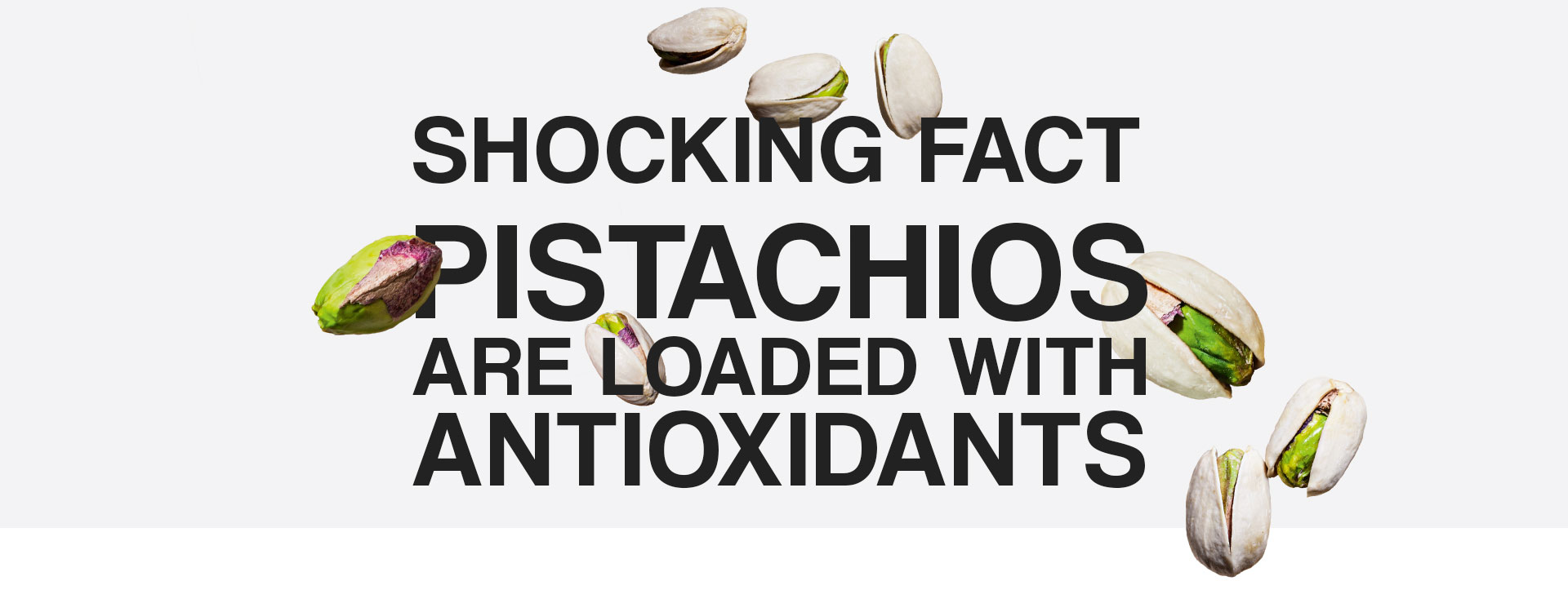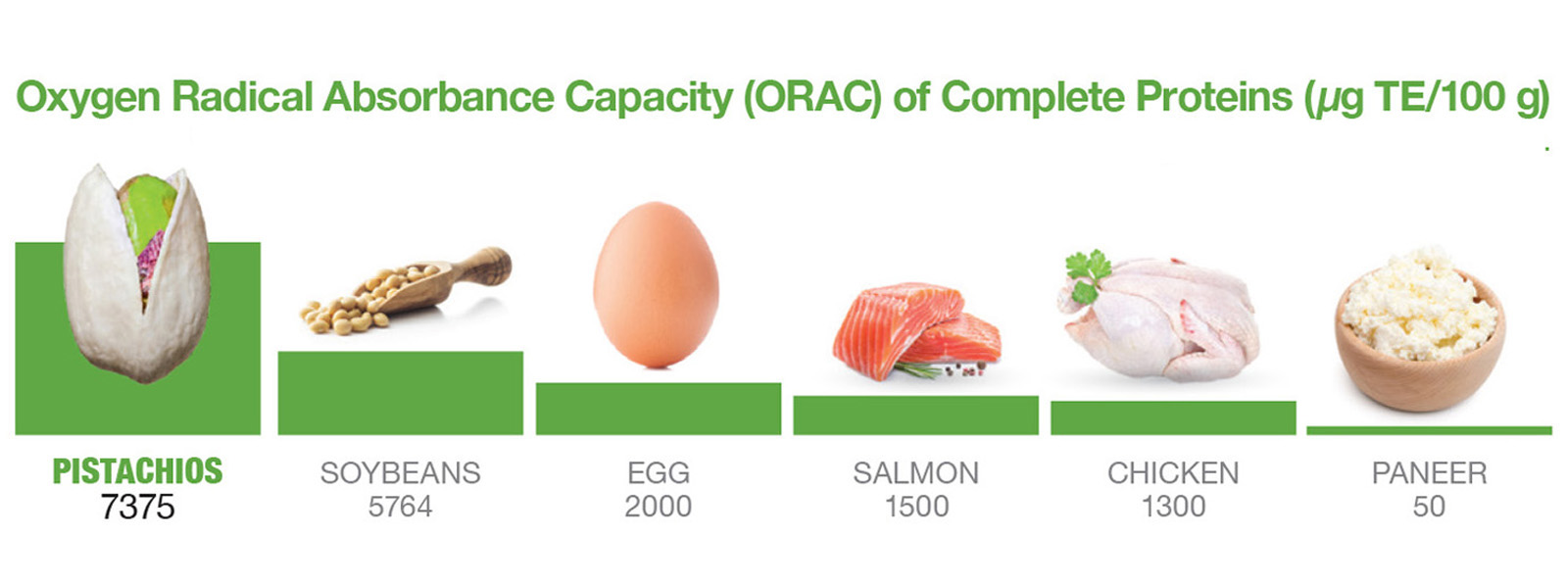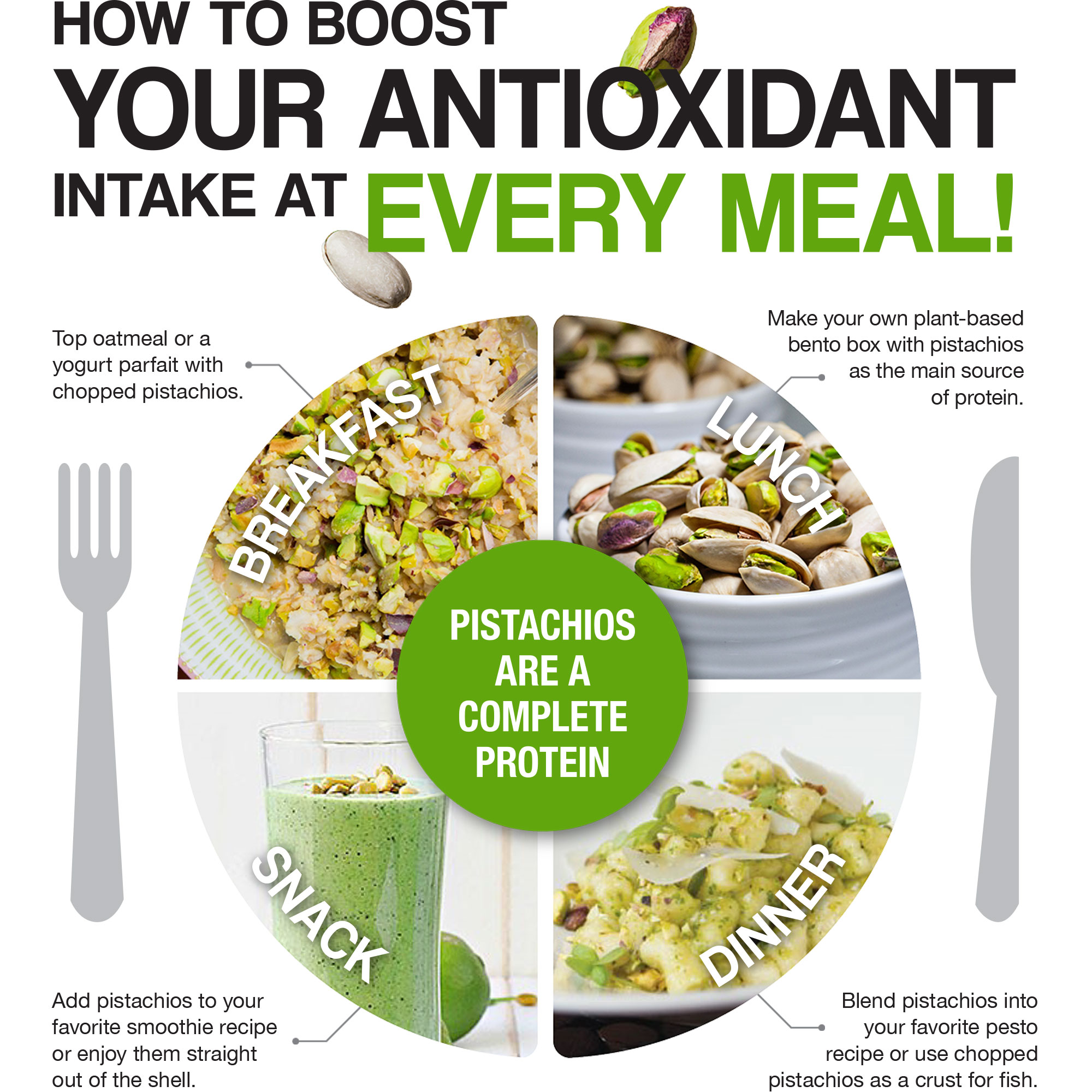
PISTACHIOS HAVE A HIGH ANTIOXIDANT CAPACITY THAT RIVALS POPULAR ANTIOXIDANT-CONTAINING FOODS
A new study conducted by Cornell University and published in the journal, Nutrients, determined that pistachios have a very high antioxidant capacity, among the highest when compared to values reported in research of many foods commonly known for their antioxidant capacity, such as blueberries, pomegranates, cherries, beets, and red wine.1,2,3,4 The purpose of the research was to measure the level of antioxidant “capacity” of pistachios. In other words, to measure pistachios’ ability to fight free radicals with antioxidants.
ANTIOXIDANT ACTIVITY OF COMMON FOODS
Researchers, led by Dr. Rui Hai Liu, used two methods of measuring antioxidants—the accepted measurement established by the United States Department of Agriculture, called ORAC, which stands for Oxygen Radical Absorbance Capacity; and CAA, short for Cellular Antioxidant Activity.1,2

ORAC is the measurement of a food’s ability to attack the free radicals in your body that are hard at work, damaging your cells. The higher the ORAC score, the more antioxidant potential there is in that food. As the name suggests, antioxidants prevent free radicals from damaging and oxidizing the cells in our bodies.

CAA is a new method that looks more closely at what might happen with cells in the human body. Antioxidants can protect from free radical damage by preventing the oxidation of cells. Free radical damage occurs from normal life processes (eating, breathing, exercising, environmental toxins).

Oxygen Radical Absorbance Capacity (ORAC) of Complete Proteins (μg TE/100 g) is a method that compares common types of complete protein foods and their ability to fight free radicals (in a lab test).
FOODS HIGH IN ANTIOXIDANTS MAY HELP PROTECT YOUR BODY AND BRAIN
- Health professionals recommend antioxidants from food sources, such as pistachios, to help protect healthy cells from free radical damage in the body.5,6
- Antioxidants neutralize the free radicals, limiting or preventing the damage they cause.
- Foods that are high in antioxidants can be a powerful weapon against disease, and premature aging of your body and your brain.3,7,8
Pistachios have a high antioxidant capacity that rivals that of popular antioxidant-containing foods, and they are a plant-based, complete protein.
Pistachios are one of the very few foods high in antioxidants that are also a complete protein—meaning they have all nine essential amino acids normally found in animal-based proteins. Perfect for people who want a more plant-based diet.

HOW ANTIOXIDANTS WORK
Most people know that antioxidants are beneficial to health, but many don’t know exactly how antioxidants work within the body. Watch the informational video below on antioxidants to learn more.

Pistachios are high in antioxidants
A new study conducted by Cornell University and published in the journal, Nutrients, determined that pistachios have a very high antioxidant capacity, among the highest when compared to values reported in research of many foods commonly known for their antioxidant capacity, such as blueberries, pomegranates, cherries, beets, and red wine.1,2,3,4 The purpose of the research was to measure the level of antioxidant “capacity” of pistachios.









